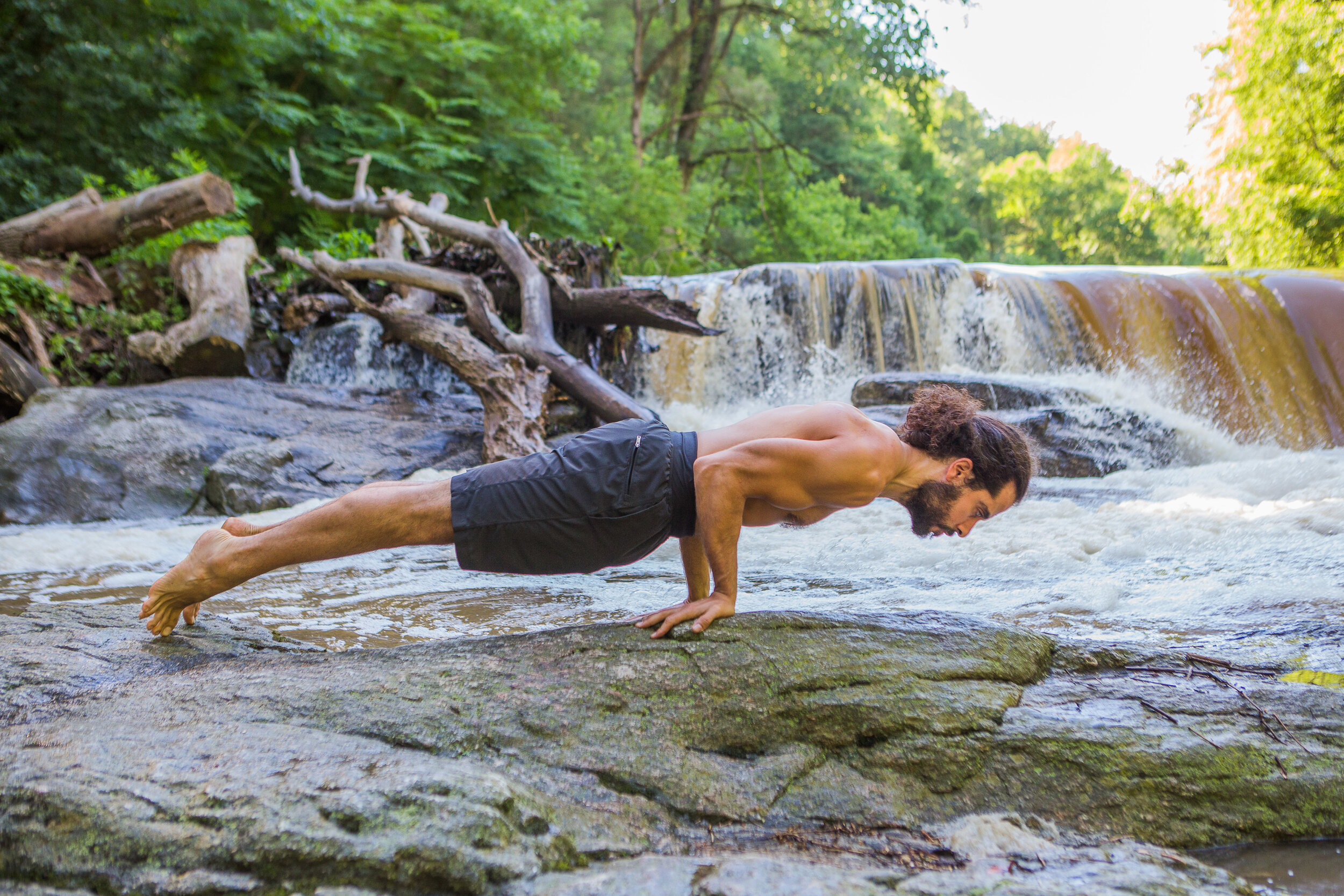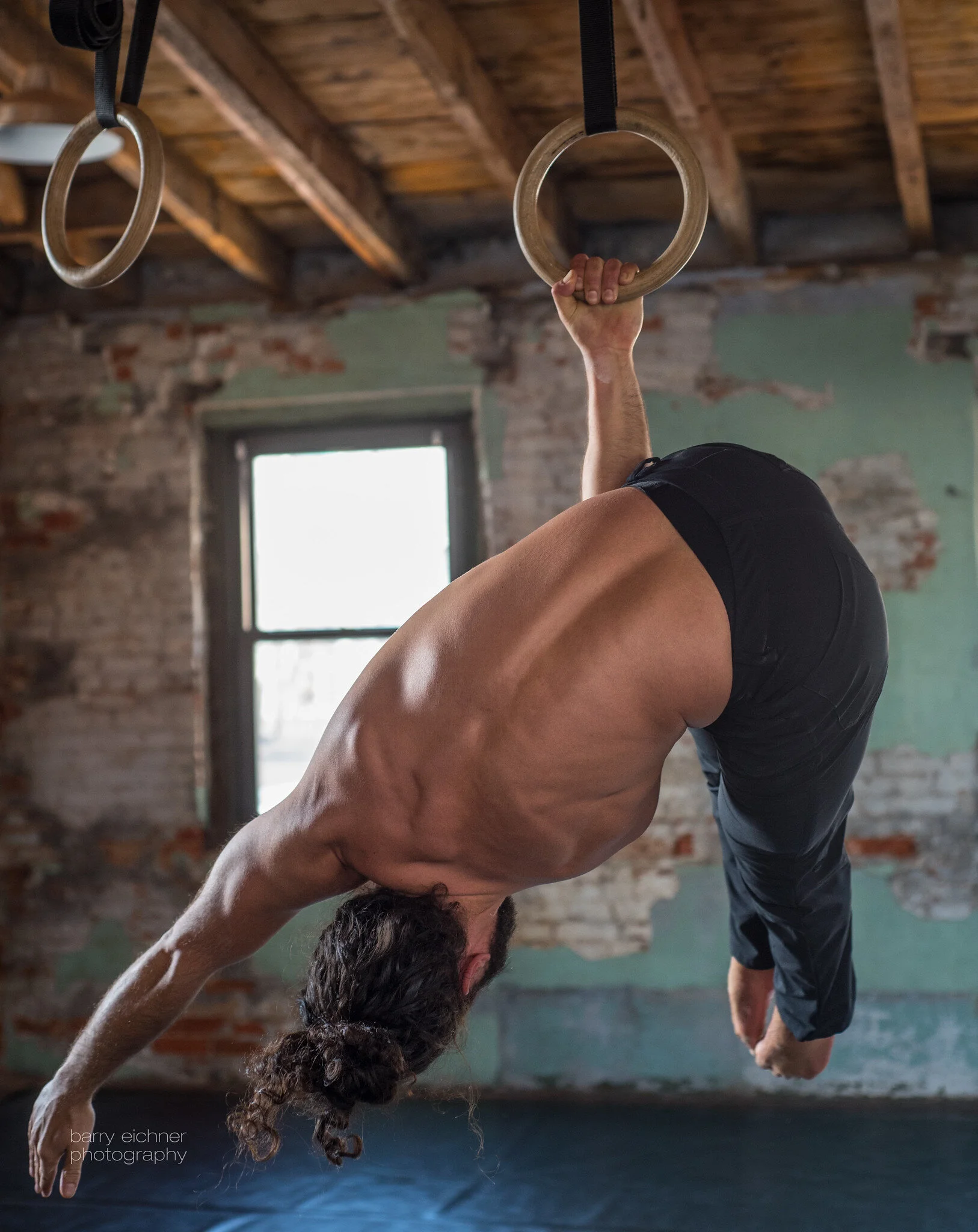Early in my introduction to strength training it was impressed upon me to perform some common rehab exercises to fortify common areas of weakness and instability. For pulling and pushing variations on external rotation have been indispensable.
Viewing entries in
Upper-Body Strength
Once the grip has adapted to basic hanging, we will begin adding complexity of holding the shoulder girdle stable while attempting to create a loaded hip flexion which will also serve to work our core (this will be from a gravity minimized position, making it “less work” physically though a likely foreign task neurologically, creating new challenges that should carry over to other movements as a “functional” movement hopes to do.
Once one develops the foundation of Upper Body Pushing found in Planks we might begin progressing toward more advanced and arguably more “fun” versions of upper body strength exercises.
We will start with two variations, active and passive hangs.
The active hang will be a safer start for beginners as it puts less stress on tendons ligaments and connective tissue, while using one’s muscular ability to support the added load.
Regarding Handstand:
Most readers will be able to begin with a plank variation that can be held for 30 seconds for 5 - 10 sets* (that is 2.5-5 total minutes of work time). Rest 1-2 minutes between each working set. (See Video Below)
For Squat:
Most beginner readers will benefit from practicing Goddess Pose/Horse Stance. (See Video Below)
…all physical effort, advantageously performed, requires core strength in varying degrees. In the beginning you can likely focus a large portion of your attention at your midsection…
Once you have an ability to stabilize/brace the midsection, you want to use those muscles to “move” your body. Don’t get stuck here, even if you are working toward the aesthetic of abdominal definition.









